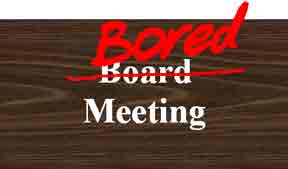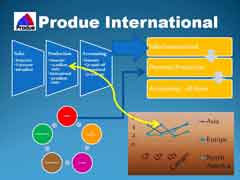The Art of Whole Brain Presentations
“In classical times when Cicero had finished speaking, the people said, ‘How well he spoke,’ but when Demosthenes had finished speaking, they said, ‘Let us march!’”
Adlai Stevenson

Which response do you want for your presentations?
- Do you want your words and thoughts to be merely appreciated?
- Or do you want people motivated to act?
The PowerPoint Presentation Problem
“At a minimum, a presentation format should do no harm. yet the PowerPoint style routinely disrupts, dominates, and trivializes content. Thus PowerPoint presentations too often resemble a school play—very loud, very slow, and very simple.”
Edward Tufte
“PowerPoint could be the most powerful tool on your computer, but it’s not. It’s actually a dismal failure. Almost every PowerPoint presentation sucks rotten eggs.”
Seth Godin
 Millions of PowerPoint, or other slideware, presentations are delivered every day. However, the vast majority of those presentations fail because they bore the audience or actually detract from the potential power of the communication.
Millions of PowerPoint, or other slideware, presentations are delivered every day. However, the vast majority of those presentations fail because they bore the audience or actually detract from the potential power of the communication.
 Only part of the problem is with the software (since most of the defaults are set up for left-hemisphere, “bullet point thinking”.) This “bullet point thinking” has resulted in bad “that’s just how it’s done” presentations. And the result as you present? Audience ennui and a wasted opportunity as audience minds tunes out.
Only part of the problem is with the software (since most of the defaults are set up for left-hemisphere, “bullet point thinking”.) This “bullet point thinking” has resulted in bad “that’s just how it’s done” presentations. And the result as you present? Audience ennui and a wasted opportunity as audience minds tunes out.
 Another major problem is that instead of the projected presentation working with and supporting the spoken words and body language of the presenter, the slides and spoken words can actually compete for brain attention, diminishing both comprehension and emotional connection. Research (pioneered by John Sweller at the University of New South Wales in Australia) shows that the human brain processes and remembers more information if it is presented either verbally or in writing, rather than both verbal and written at the same time.
Another major problem is that instead of the projected presentation working with and supporting the spoken words and body language of the presenter, the slides and spoken words can actually compete for brain attention, diminishing both comprehension and emotional connection. Research (pioneered by John Sweller at the University of New South Wales in Australia) shows that the human brain processes and remembers more information if it is presented either verbally or in writing, rather than both verbal and written at the same time.
"The use of the PowerPoint presentation has been a disaster. It should be ditched"
Professor John Sweller, University of NSW
However, rather than ditch PowerPoint (or other multimedia presentations) you can learn how to create and give presentations that work with the brain.
Whole-Brain Presentations
The human brain is an amazing miracle. Once you understand some of the basic brain architecture and how the various parts of the brain process information, all of your communications, with yourself and others, can improve by leaps and bounds.
 After you learn about the brain, you will learn how to create presentations that communicate to all of the brain. Even if you do not write your speech or design your slides, you still need to direct the creation of the presentation, just as a film director applies his or her vision to the collaborative creation of a film. Either you write and create your whole-brain presentation, or you direct others to write and create your whole-brain presentation.
After you learn about the brain, you will learn how to create presentations that communicate to all of the brain. Even if you do not write your speech or design your slides, you still need to direct the creation of the presentation, just as a film director applies his or her vision to the collaborative creation of a film. Either you write and create your whole-brain presentation, or you direct others to write and create your whole-brain presentation.
Whole-brain presentations are night-and-day different from standard audience-ennui-inducing bullet-point presentations.
Whole-brain presentations:
- increase comprehension of concepts & facts
- stimulate the speaker-audience connection
- create emotional buy-in
- put decisions and information into context
- add meaning and perspective to understanding
- wake up group synergy
- stick in the audience’s memory
Whatever your position in your organization, if you give speeches or presentations, you will see a huge difference in audience response as you move toward whole-brain presentations.
Are You Ready to Know More?
If you would like to have Greg speak to your group, contact us at 801-510-1351 or through our contact page.
Home l Writing l Speaking l Workshops l Consulting l About Greg l Contact Greg
Greg Larson Communications • All Rights Reserved • © 2010
